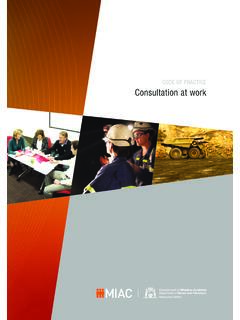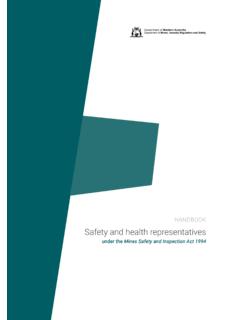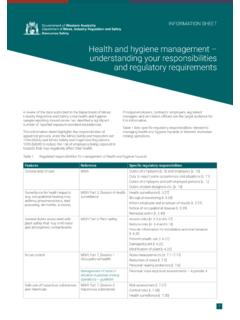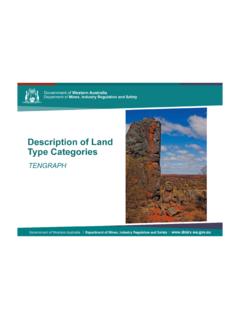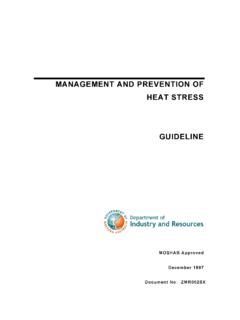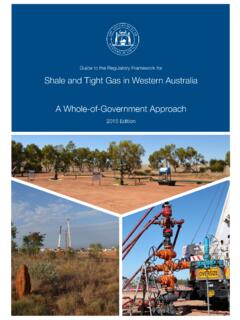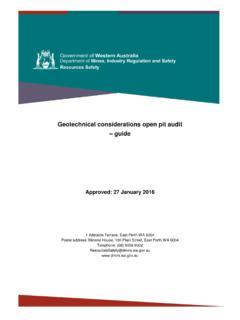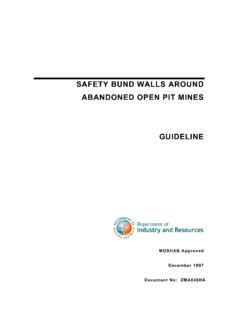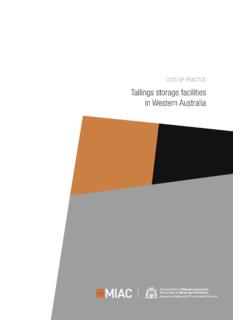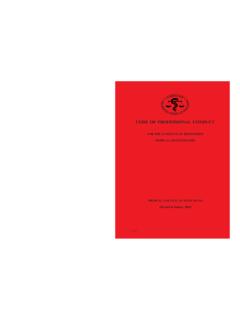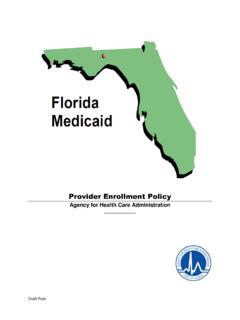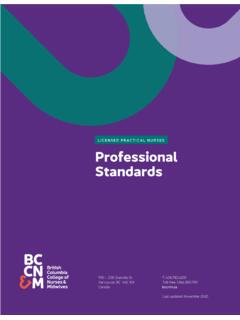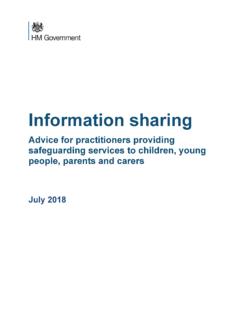Transcription of Preparation of a health and hygiene management plan - guide
1 Preparation of a health and hygiene management plan guide October 2018 Preparation of a health and hygiene management plan guide Page 2 of 28 This page has been left blank intentionally Preparation of a health and hygiene management plan guide Page 3 of 28 Page 4 of 28 Contents Introduction .. 5 Why have a health and hygiene management plan? .. 7 Who has a role in a health and hygiene management plan? .. 8 When is a health and hygiene management plan required? .. 9 health and hygiene management plan requirements .. 10 Step 1 Describe the operation .. 10 Step 2 Identify hazards .. 11 Step 3 Assess the risk .. 13 Step 4 Verification and validation of controls .. 17 Step 5 Document hazards, risks, controls and improvements .. 19 Sample collection, interpretation of results and storage of records .. 19 Valid samples .. 19 Interpretation of results .. 21 Reporting results .. 25 Storage of records .. 25 Appendix A SRS sample submission guide .
2 26 Appendix B Common causative agents and associated diseases and health conditions .. 28 Page 5 of 28 Introduction All mining workplaces have some form of chemical, biological, radiation and physical hazard or human stressor that may cause injury, illness, or impair workers health or wellbeing. These agents can include dusts, chemicals, radiation, noise, extremes of temperature, ergonomic, vibration, bacteriological, fungal and illumination hazards; and the stressors caused by shift work, remote locations and time away from home. A health and hygiene management plan (HHMP) provides a systematic process for managing agents at all stages of the mining operation. It is an integral part of an organisation s safety management system and complements other major hazard management plans for the site (see Figure 1). It documents the agent, how hazards are controlled and what methods are used to verify that controls are effective. The HHMP is more comprehensive than the dust and noise monitoring plan previously required by the Department of Mines, Industry Regulation and Safety (DMIRS).
3 A HHMP sets out a holistic, risk-based approach to managing all health and hygiene hazards that adopts changing technology and current scientific knowledge, and encourages innovation. The HHMP should demonstrate an understanding of the mining operation s hazardous agents based on solid research and consultation with experts and workers. The HHMP provides objective guidance and instruction so that both the employer and workers understand the health risks in the workplace, what controls are in place and how the controls work. It documents the policies, procedures and reporting processes that will ultimately verify that the health of workers is not being adversely affected. Page 6 of 28 Figure 1 Site-based work health and safety management system The management of health and hygiene hazards follows a well-established process. Figure 2 depicts the stages of this process. The first stage involves anticipating and identifying hazardous agents and assessing the risk that these present.
4 In the second stage, roles are defined and controls and work systems are implemented to manage the hazard. In the final two stages, inspections, tests, monitoring and health assessments are conducted to confirm that the controls and work systems are effective and, if required, the controls and work systems are modified, or additional controls are implemented. Page 7 of 28 Figure 2 Stages in managing health and hygiene hazards Why have a health and hygiene management plan? The identification and management of hazards is a requirement of the Mines Safety and Inspection Act 1994 (MSIA). Additional specific obligations are outlined by the Mines Safety and Inspection Regulations 1995 (MSIR). These include the requirements that: employers must, so as far as practicable, provide workplaces, systems of work, information and training so that employees are not exposed to hazards [MSIA s. 9] workers are not exposed to atmospheric contaminants (agents) above exposure limits and exposures are maintained to as low as practicable [MSIR r.]
5 ] workers are not harmed by the adverse effects of extremes of heat or cold [MSIR r. ] noise hazards have been identified, quantified, risk assessed and controls have been defined [MSIR rr. ]. Regular noise measurements and hearing tests (audiometry) are used to demonstrate compliance with the requirements to keep noise exposure to as low as practicable and below defined levels hazardous substances have been identified [MSIR r. ], an assessment of the risk from hazardous substances has been completed [MSIR r. ] and the means by which exposure will be controlled has been detailed [MSIR r. ] employers carry out health assessments if adverse health effects may be related to exposure, or if directed to by the State mining engineer [MSIR r. ] employers conduct biological monitoring if accepted values may be exceeded, or if directed to by the State mining engineer [MSIR r. ]. The HHMP complements the requirements of MSIR r. (1)(b) to prepare a project management plan (PMP) that identifies the operation s major risks and summarises the strategies to manage those risks.
6 Page 8 of 28 The HHMP also describes the mining operation s policies and processes to reduce health hazards, lists the roles and responsibilities of relevant staff, outlines contingencies when measurements indicate imminent or increasing risk to health or wellbeing of staff, and provides an overview of the content and frequency of training. The HHMP may also include what hazard management techniques are in place in the event of an emergency, if these are not covered in an emergency response plan. As such, it is an important source of information for all mine workers and must be written in plain English so that it is meaningful for all internal stakeholders. Regular inspections, audits, atmospheric monitoring, medical examinations and biological testing are used to demonstrate that controls and systems of work are effective with exposures maintained below standards and are as low as practicable such that workers are not adversely affected. Some information gathered as part of a HHMP is submitted to DMIRS as required by MSIR rr.
7 (d) and (b) ( atmospheric sampling results). Other records must be maintained in accordance with good corporate governance provisions and be available for inspection or review. Due to the specific nature of radiation hazards associated with mining of thorium or uranium ores, a separate radiation management plan that details controls and validation techniques is required [MSIR ] and is outside the scope of this document. The requirements of the HHMP are consistent with the expectations contained within the model Work health and Safety Regulations to develop and implement major hazard management plans. Who has a role in a health and hygiene management plan? The registered manager (RM) endorses the HHMP and, as the person responsible on a daily basis for the control of the mine [MSIA s. 33(3)], makes a commitment on behalf of the organisation to fulfil the HHMP and its associated obligations. The HHMP is submitted to DMIRS by the RM (or a responsible person appointed by the RM).
8 The appointed ventilation officer (VO) or hygienist collates the required information and arranges the production of the HHMP. The VO confirms that all information contained within the HHMP is correct, accurate and that all criteria have been met. The VO shall be satisfied that controls are adequate to prevent workers from being adversely exposed to agents in the workplace (as per MSIR rr. and ). The VO shall be satisfied that the verification and validation methods detailed in the HHMP ( air monitoring, medical examinations, biological testing) are sufficiently robust to confirm that controls are suitable, effective and are implemented so as to reduce exposures to levels as low as practicable (this is likely to require consultation with medical or other personnel). The ventilation technician ( registered sampler) confirms that all samples are collected in accordance with approved or recognised methods, that samples are representative of exposure, and that sample results are submitted correctly and within a reasonable time after collection.
9 An approved noise officer (NO) confirms that all noise and vibration information contained within the HHMP is correct and accurate. The NO shall be satisfied that controls are adequate to prevent workers from being exposed to excessive noise and vibration and that exposure is as low as practicable. The NO shall be satisfied that the verification and validation methods detailed in the HHMP ( hearing tests, dosimetry, audiometric testing) are sufficiently robust to confirm that controls are suitable, effective and are implemented so as to reduce worker exposures to levels as low as practicable. The NO is also responsible for producing the noise report and noise control plan for the operation. The HHMP does not replace this obligation. Other subject matter experts such as nurses, doctors, ergonomists, psychologists, and health and safety practitioners all have a role to ensure that information contained within the HHMP is Page 9 of 28 correct and accurate, that controls are adequate to prevent harm, and that the verification and validation methods are suitable.
10 Key personnel including the mine geologist, mine superintendent, process plant superintendent, village manager, lab manager, airstrip coordinator and others, all have a role in providing accurate and timely information about the agents and their controls under their area of responsibility. They should also advise the VO of any changes to their areas of operation that could change the risk profile to workers. Mines inspectors or mines safety officers will conduct inquiries to ascertain that controls are adequate to prevent personnel from being exposed to agents. Inspectors also evaluate the verification and validation methods detailed in the HHMP to ensure they are sufficiently robust to confirm that controls are suitable, effective and have been appropriately communicated to the workforce. When is a health and hygiene management plan required? All mining operations, including processing plants, supporting infrastructure ( ports, camps), rehabilitation areas and exploration sites are required to identify hazards, assess the risks posed by the hazards, implement controls and document the methods by which the effectiveness of those controls are assessed.
